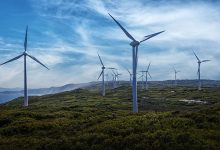Australia is likely to reach 50 per cent renewables by 2030, even without a change to federal policy and despite the Coalition government scare campaign, thanks to the growing uptake of rooftop solar and the big pipeline of large scale projects brought to the market by state-based targets.
The assessment in new modelling by leading analyst group Reputex underlines one of the hollow claims by the Coalition government, some business groups and conservative media during the election campaign, that Labor’s 50 per cent renewable energy target by 2030 would ruin the economy and push up prices.
In reality, the Labor target sounded ambitious but actually represented a significant slowdown in current deployment. The chances were that with a coherent policy, the 50 per cent renewables target would be easily met and surpassed.
Reputex says that the target will likely be reached anyway, with no change to federal energy policy, and will be underpinned by around 19GW of new renewable capacity under the various state renewable energy schemes and the big surge rooftop solar installations.
The good news is that the current pipeline of rooftop solar and large-scale renewables – another 6GW to be built to meet and beat the existing renewable energy target of 33,000GWh – will help lower average wholesale electricity prices to around $70/MWh by 2021.
This is reappointed energy and emissions reduction minister Angus Taylor’s price target, but it merely reflects the current state of the electricity market, and the price of the futures market for that date. Taylor’s threat to wield a “big stick” and his lack of coherent policy may put this target in peril.
Reputex warns that any fall to around $70/MW˙ may be short-lived, precisely because of the Coalition’s lack of a clear energy policy, and could rebound to more than $100/MWh and even a peak of $130/MWh in the mid 2030s because the Coalition would not be able to encourage enough new generation to replace the existing thermal plant that will likely close over the coming decade.
Reputex says that current state policy – driven by the 50 per cent renewable energy targets in Victoria (legislated) and Queensland (an election commitment) is likely to drive around 13GW of new renewable energy capacity by 2030, in addition to the 6GW of renewable capacity currently committed for development.
“This would see renewable energy generation grow to more than 50 per cent of electricity in the National Electricity Market (NEM) by 2030,” it says in a new report. “RepuTex therefore suggests that the market is on track to reach a 50 per cent renewables target by 2030, irrespective of an explicit 50 per cent renewable energy target.
“Under current policy we see around 11GW of new large-scale wind and solar entering the system by 2030, underpinned by the Queensland and Victorian renewable energy targets, along with a further 8GW of new rooftop solar installations”, said RepuTex head of research, Bret Harper.
(The rooftop solar prediction seems a little underdone considering that deployment is running at between 1.5GW and 2GW a year over the last two years, and the Victoria state rebate will seek another 2.6GW in that state alone).
Update: Reputex says they have several scenarios, and one in which 23GW of rooftop solar is added from 2019 to 2030 results in a 60 per cent renewable energy share by 2030, as opposed to the core scenario of 52 per cent renewables by 2030.
The final percentages, however, will depend on Queensland actually meeting its own 50 per cent renewables target, and it assumes that Snowy 2.0 is built as planned by around 2025. ”
The addition of a large amount of energy storage is likely to benefit utility-scale solar and wind energy – the least-cost forms of energy – which become more appealing with firming to ensure predictability for buyers,” it says. Both Snowy and Infigen Energy have said that the price of “firmed” renewables is well below $70/MWh.
RepuTex says the new additions of low-cost wind and solar wind and solar will lower wholesale prices, and reduce the role of higher priced coal and gas generation in the market.
Even with declining revenues under the federal RET and delays for grid access, we see new renewable energy projects continuing to attract competitive long-term financing, particularly in states with strong renewable targets and favourable spot market conditions”, he said.
This will have an impact on the existing fleet. “The competitive pressure of new low-cost supply is modelled to significantly limit demand for coal-fired energy, even without a direct emission constraint,” Harper says. “As a result, fossil fuel generation is modelled to be more broadly on the decline, displaced by a large volume of solar, wind, and pumped-hydro.”
 But the problem comes in the lack of a long-term federal policy framework, which could ultimately lead long-term prices to grow back above $100/MWh as aging coal-fired generators are forced to close and the supply-demand balance again becomes tighter.
But the problem comes in the lack of a long-term federal policy framework, which could ultimately lead long-term prices to grow back above $100/MWh as aging coal-fired generators are forced to close and the supply-demand balance again becomes tighter.
“The low price environment over the medium-term is good for consumers, but not so good for inflexible generators, which will be at risk of being pushed out of the market by cheaper, more flexible technologies like wind and solar with pumped hydro”.
“Without a plan to prepare for the exit of fossil fuel generation we forecast a return to a boom-bust investment cycle, with elevated wholesale prices and increased volatility, rather than a more orderly transition” he said.









